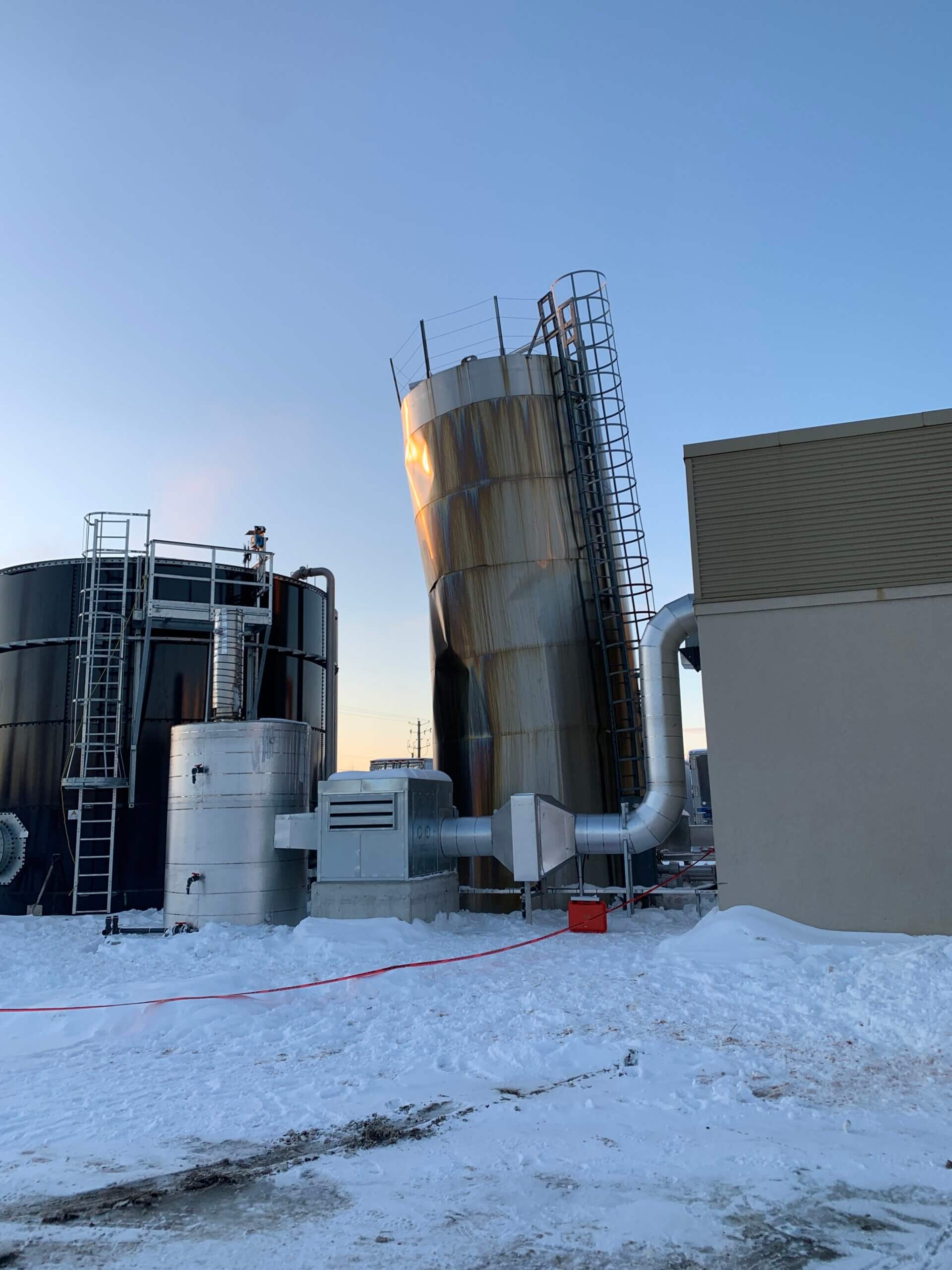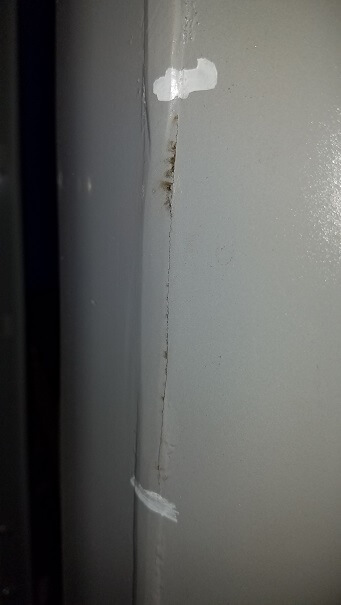Forgotten external stresses in the design phase are often at fault
By Hugo Julien, P.Eng.
The cause of an incident associated with pressure equipment can often be linked to a design issue. Even if several external loadings must absolutely be considered in the initial design, the manufacturing and inspection requirements of the equipment are too often forgotten or poorly communicated in the specifications sent to the manufacturer. In general, it is the responsibility of the customer, or the engineer representing them, to communicate the requirements to the designer. Below is an overview of the nine crucial external loadings to consider in the design of a pressure vessel, and, of course, to keep in mind for future files related to pressure equipment failures that you could inherit.
Note that this list is taken from documents from the American Society of Mechanical Engineers (ASME), Section VIII div. 1-2021, whose construction codes and standards comply with Canadian regulations.
1. The maximum allowable indoor or outdoor (vacuum) working pressure
 Internal pressure is almost always taken into consideration when designing, since all pressure vessels come with a clear limitation on the maximum internal pressure. However, the same cannot be said for external pressure, especially for devices exposed to full or partial vacuum. It is less common for the tank to be designed to operate in those conditions. In our experience, the wall thickness of pressure vessels or pipes potentially exposed to a vacuum must be increased during the design of the equipment. A potential complete vacuum will, in general, justify a thicker wall than compared to a typical internal pressure – above 150 PSI (1034 kPa) – for all pressure vessels having an outside diameter of 24 inches and more. Take the example of an aluminum can of a popular soft drink. When the can is not yet opened, significant pressure can build up without any concern for the integrity of the can. On the other hand, when the same can is empty, it is very easy to flatten it with a simple pressure of the fingers. If there is a risk of a vacuum inside the process, the design engineer must ensure that the equipment chosen can withstand that.
Internal pressure is almost always taken into consideration when designing, since all pressure vessels come with a clear limitation on the maximum internal pressure. However, the same cannot be said for external pressure, especially for devices exposed to full or partial vacuum. It is less common for the tank to be designed to operate in those conditions. In our experience, the wall thickness of pressure vessels or pipes potentially exposed to a vacuum must be increased during the design of the equipment. A potential complete vacuum will, in general, justify a thicker wall than compared to a typical internal pressure – above 150 PSI (1034 kPa) – for all pressure vessels having an outside diameter of 24 inches and more. Take the example of an aluminum can of a popular soft drink. When the can is not yet opened, significant pressure can build up without any concern for the integrity of the can. On the other hand, when the same can is empty, it is very easy to flatten it with a simple pressure of the fingers. If there is a risk of a vacuum inside the process, the design engineer must ensure that the equipment chosen can withstand that.
2. The weight of the pressure vessel and its contents under normal service conditions (including additional pressure due to the liquid column)
In general, designers of pressure vessels do not forget to include the weight of the steel used to support equipment. However, the weight of the fluid inside the equipment and its density are not always included. Depending on the volume of the pressure vessel and the amount of liquid it contains, these values can be significant. More specifically, the additional weight associated with the presence of a fluid (water, acid, caustic (sodium hydroxide), etc.) inside the tank will certainly increase the stresses in the supports area and, consequently, the risk of breakage.
3. Additional forces related the weight of the equipment attached to the external walls of the pressure vessel
It is rare for large pieces of equipment to be attached to the outer walls of pressure equipment, but when that happens, the designer must not forget to include, at the time of the final design, the future constraints generated by said equipment.
In the final design, occasionally we see a lack of consideration for the external forces and moments transferred by the pipes which will be attached to the corresponding openings (or punctures) of the pressure vessel. All too often, the designer does not foresee any additional stress that may come from the weight of the piping or the result of its thermal expansion. This issue becomes very important for openings with a nominal diameter of 3 inches or more. Cracks associated with very high stresses can be the consequence of such an oversight.
4. Cyclic and dynamic reactions due to pressure or thermal variations, or from equipment mounted on a vessel, and mechanical loadings
 Fatigue, due to mechanical or thermal cyclic loading, is another potential cause of failure of pressure vessels and piping components. This fatigue occurs when a pressure vessel is subjected to repeated stress variations.
Fatigue, due to mechanical or thermal cyclic loading, is another potential cause of failure of pressure vessels and piping components. This fatigue occurs when a pressure vessel is subjected to repeated stress variations.
Think, for example, of the famous flexible plastic ruler that we probably played with too often in class! Every time you bent it, you put stress on it and unknowingly started cracks in its outer walls. Cracks that propagated until it completely broke.
The topic of cyclic loads has already been addressed in another technical article by CEP, published in February 2020: https://cep-experts.ca/fatigue-vs-pressure-vessels/
5. Actions of wind, snow and earthquakes (if applicable)
These external stresses can become very critical for pressure vessels with a large mass (for earthquakes) and those with a small diameter and a significant height (for crosswinds).
Regarding the stresses associated with earthquakes, if the mass of a tank increases by more than 5% during a modification – for example adding internal equipment, increasing the thickness of insulation, changing the density of the liquid, etc. – during its useful life, it is recommended to carry out new calculations to check whether the new stresses at the supports are still within the limits allowed by the original building code or if the tank will need additional reinforcement.
In addition, it should be noted that these calculations must always be carried out according to the latest edition of the National Building Code in force where the appliance is installed.
Please note that the St. Lawrence Valley, including Montreal and Quebec or the Vancouver and Victoria area are territories representing earthquake risks.
6. Shock stresses, such as those caused by sudden changes in fluid pressure
A water hammer is a classic example of a possible consequence of a sudden increase in pressure inside a pressure vessel. Specifically, a water hammer can occur when a valve closes too quickly, which can create a shock wave along the pressurized piping and the pressure vessel, leading to a catastrophic failure, such as an explosion. Other phenomena, such as a chemical reaction, can also cause this external stress. The engineer responsible for choosing the pressure vessel must ensure, once again, that this possible shock effect in the process can be safely absorbed by the pressure vessel.
7. Temperature gradients and the difference in the expansion of materials
The most classic example is the use of two different types of steels or materials in the design of the pressure vessel. For example, the oil industry suggests minimizing the use of a weld joint connecting austenitic stainless steel (type 304 or 316) with carbon steel to avoid possible cracking due to different coefficients of thermal expansion between the two materials.
Another example: projecting a cold fluid onto a hot wall or vice versa. A real life instance of this might be pouring cold water on a hot car engine, which could risk cracking it.
Tanks with a thickness of more than 2 inches are more susceptible to such a problem.
8. Abnormal pressures, such as those caused by an explosion
This stress is rare and was added in an ASME code in the early 2000s. A good example of equipment subject to this type of stress is a high voltage circuit breaker, which is pressurized using an inert gas. In this type of equipment, there is a risk that a large electric arc deviating from its path could strike the internal wall of the pressure vessel. Since this risk exists, the designer must design the pressure vessel so that it can absorb this shock (which comes with a significant increase in heat and pressure) in a safe manner, while foreseeing replacement with new equipment if such an event occurs.
9. Pressure generated by pressure tests to certify the device
This stress is well known to pressure equipment designers and generally well respected.
Forgetting one or more of the stresses listed above may explain the cause(s) of damage associated with a new pressure vessel. These solicitations, if they exist, must be considered in the claims adjuster’s investigation stages.
Finally, please take note that if an incident is associated with a pressure equipment, the jurisdiction where such equipment has been installed must be informed so that it can also carry out its own investigation.
If you have any questions about pressure vessels, do not hesitate to contact our team of experts specialized in mechanical Engineering
